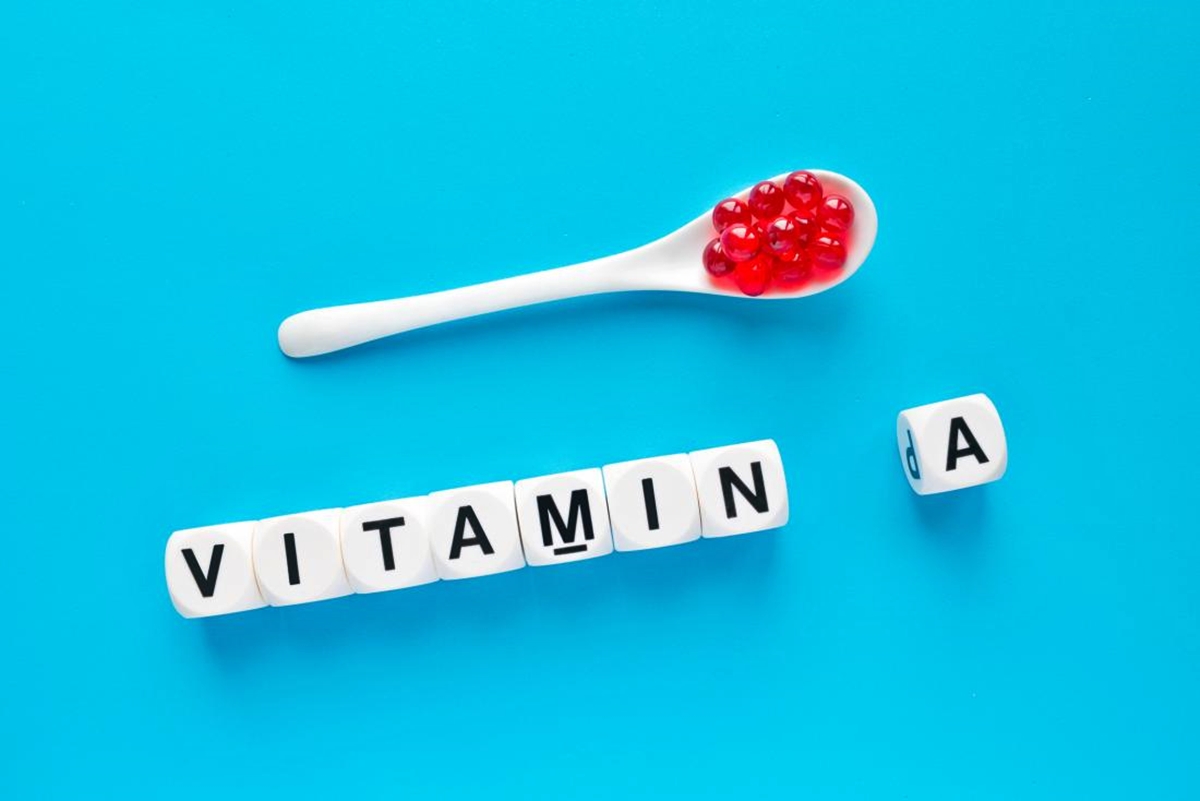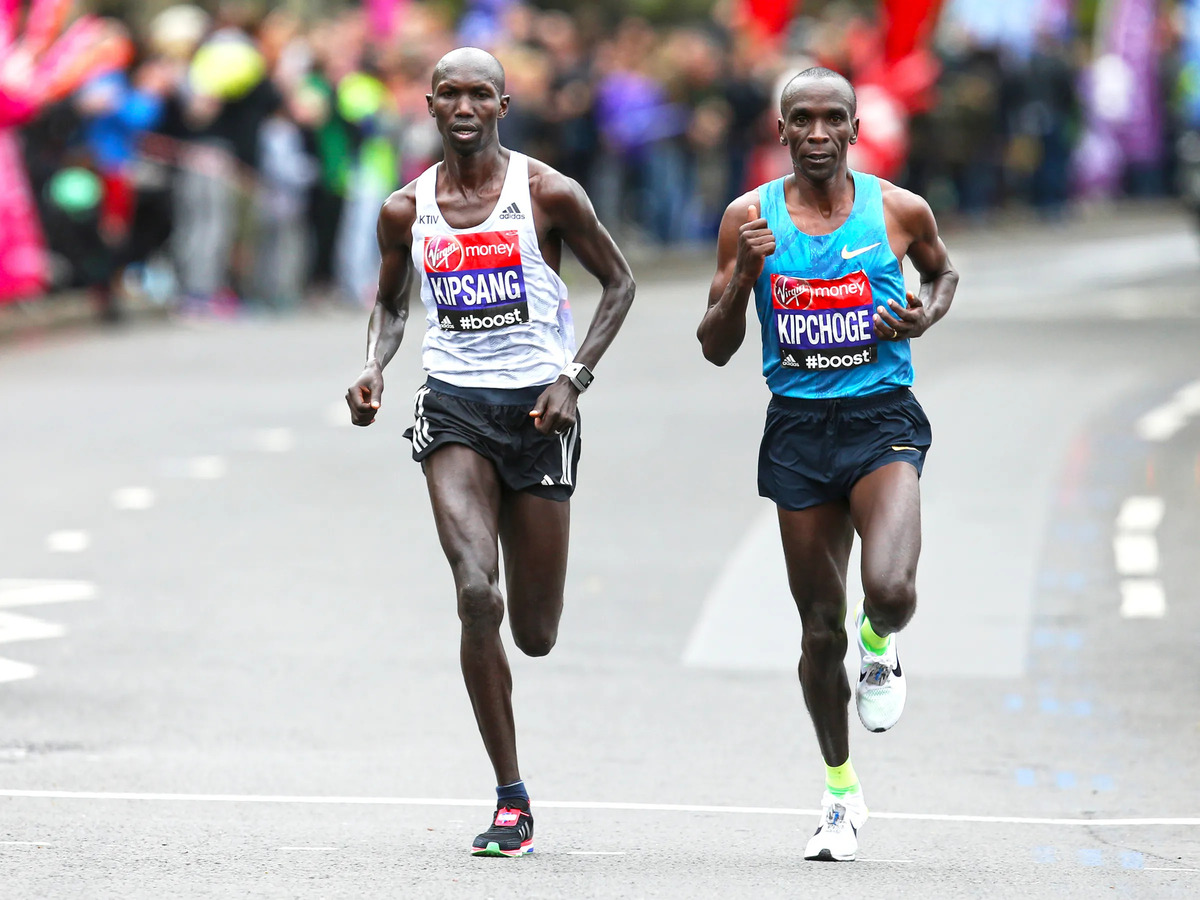Home>Misc>Featured>Genes Linked To Athletic Performance? Where Are They Located?


Featured
Genes Linked To Athletic Performance? Where Are They Located?
Modified: August 19, 2023
Discover the location of the genes linked to athletic performance in our featured article. Uncover the secrets behind genetic factors influencing athletic abilities.
Introduction
Athletic performance has long been a subject of fascination and study. From sprinters with lightning speed to endurance athletes who seem to defy fatigue, the question of what makes someone excel in sports has intrigued scientists, coaches, and athletes alike. While factors such as training, nutrition, and mindset play crucial roles, recent research has pointed towards another influential factor – genetics.
Genes are the building blocks of life, carrying the instructions that determine our physical characteristics and biological functions. Certain genetic variants have been found to be associated with athletic performance, influencing factors such as muscle strength, endurance, and speed. Understanding the genetics of athletic performance not only provides valuable insights into human biology but also allows for personalized training programs and the potential for optimizing performance.
In this article, we will delve into the fascinating world of the genetics of athletic performance. We will explore how genes are identified and linked to athletic abilities, examine specific genes associated with athletic performance traits, and discuss the potential implications of this knowledge for coaches, athletes, and the general population.
Before we dive into the details, it is important to acknowledge that genetic factors are only one piece of the puzzle when it comes to athletic performance. Environment, training, and other non-genetic factors also play critical roles. Nevertheless, understanding the genetic underpinnings of athletic performance can provide valuable insights and potentially help unlock the secrets to reaching peak performance levels.
So, join us on this journey as we explore the complex world of genes and athletic performance. Let’s unravel the mysteries hidden within our DNA and uncover the incredible potential that lies within.
The Genetics of Athletic Performance
Athletic performance is influenced by a combination of genetic and environmental factors. While training, nutrition, and mental fortitude are widely recognized as crucial components, recent research has shed light on the role of genetics in athletic abilities. The study of the genetics of athletic performance aims to uncover the specific genes and genetic variants that contribute to superior athletic performance.
Our genetic makeup plays a significant role in determining our physical characteristics and capabilities. Genes influence factors such as muscle fiber type, oxygen-carrying capacity, metabolism, energy production, and response to training. Some individuals are naturally predisposed to excel in specific athletic disciplines, while others may have genetic variations that limit their potential or increase their susceptibility to certain injuries.
One area of focus in the genetics of athletic performance is the study of genes related to muscle structure and function. Muscle fibers are categorized into two main types: slow-twitch (Type I) and fast-twitch (Type II). Slow-twitch fibers are more suited for endurance activities, while fast-twitch fibers are associated with explosive power and speed. Genetic variations in genes such as ACTN3, which codes for a protein found in fast-twitch muscle fibers, have been linked to athletic performance. Certain variations in ACTN3 are associated with enhanced sprinting and power-based activities, while others are more advantageous for endurance activities.
Another area of interest is the study of genes involved in oxygen transport and utilization. These genes govern factors such as red blood cell count, hemoglobin levels, and blood vessel diameter. Variations in genes such as EPAS1, which regulate the production of red blood cells, have been found to be associated with enhanced endurance performance.
Genes that influence metabolism and energy production also play a role in athletic performance. For example, variants in genes such as PPARGC1A, which controls energy metabolism and muscle fiber composition, have been implicated in aerobic capacity and endurance performance.
It is important to note that athletic performance is not solely determined by the presence or absence of specific genes. The expression and interaction of these genes with environmental factors, such as training, nutrition, and lifestyle, also contribute to an individual’s athletic abilities. A combination of favorable genetic variations, along with a well-structured training program and optimal lifestyle choices, can maximize athletic potential.
In the next section, we will explore how researchers identify and link specific genes to athletic performance traits, delving deeper into the fascinating world of genetics and sports.
Identifying Genes Related to Athletic Performance
Identifying the specific genes and genetic variants that are associated with athletic performance is a complex task that requires a combination of scientific research, genetic analysis, and statistical analysis. Researchers employ various strategies and techniques to uncover the genetic factors that contribute to superior athletic abilities.
One approach is the genome-wide association study (GWAS), where researchers compare the genetic profiles of elite athletes with those of non-athletic individuals. By analyzing thousands or even millions of genetic markers across the genome, GWAS can identify regions of the genome that are statistically associated with athletic performance traits. These genetic markers, or single nucleotide polymorphisms (SNPs), provide insight into the potential genetic factors that differentiate elite athletes from the general population.
Another method involves studying families or pedigrees with a history of exceptional athletic performance. By analyzing the genetic makeup of family members who excel in specific sports, researchers can identify common genetic variations within the family that may contribute to their athletic abilities. This approach helps pinpoint specific genes or genetic regions that may be associated with superior performance.
Advances in technology, such as next-generation sequencing (NGS), have revolutionized the field of genetic analysis. NGS allows researchers to sequence an individual’s entire genome, providing a comprehensive view of their genetic makeup. This enables the identification of rare genetic variants or mutations that may play a role in athletic performance.
Functional studies are also crucial in understanding the functional impact of the identified genetic variants. By studying the biological functions and pathways associated with these variants, researchers can gain insights into how they may influence athletic performance traits. For example, they may examine the effect of a particular genetic variant on muscle structure, metabolism, or oxygen utilization.
It is important to note that identifying genes related to athletic performance is a complex process, and individual genetic variations only explain a small fraction of the overall athletic performance variability. It is a combination of multiple genetic variations, their interaction with environmental factors, and the complex nature of athletic performance traits that contribute to an athlete’s abilities.
In the next section, we will explore some of the candidate genes that have been linked to athletic performance, providing further insight into the role of genetics in sports.
Candidate Genes for Athletic Performance
As researchers continue to unravel the genetic factors underlying athletic performance, several candidate genes have emerged as potential contributors to exceptional athletic abilities. These genes play roles in various physiological processes relevant to sports performance, including muscle function, energy metabolism, oxygen transport, and recovery.
One prominent candidate gene is the ACTN3 gene, which encodes the protein alpha-actinin-3 found predominantly in fast-twitch muscle fibers. The ACTN3 gene has two common variations: the R allele, associated with the production of alpha-actinin-3, and the X allele, which results in the absence of this protein. The presence of the R allele has been linked to enhanced power and sprint-based activities, while the absence of alpha-actinin-3 due to the X allele may be advantageous for endurance activities.
The ACE gene, which codes for angiotensin-converting enzyme, is another candidate gene associated with athletic performance. The ACE gene has two main variations: the I allele, associated with higher levels of the enzyme, and the D allele, associated with lower levels. Studies have suggested that the I allele may be advantageous for endurance activities, while the D allele may be more beneficial for strength and power-based activities.
Another candidate gene is the PPARGC1A gene, also known as PGC-1alpha, which regulates energy metabolism and mitochondrial biogenesis. Variations in the PPARGC1A gene have been linked to aerobic capacity and endurance performance. Certain variations in this gene may enhance the individual’s ability to utilize oxygen and produce energy efficiently during aerobic activities.
Genes related to muscle structure and function, such as the MYLK gene (myosin light chain kinase), have also been implicated in athletic performance. The MYLK gene plays a role in muscle contractions and fiber types. Variations in this gene may influence muscle strength, power, and fatigue resistance, ultimately affecting an individual’s athletic abilities.
These are just a few examples of the candidate genes that have been associated with athletic performance. However, it is important to remember that the influence of these genes on athletic abilities is complex and multifaceted. The interaction between these genetic variations and other factors, such as training, nutrition, and psychological factors, is crucial in determining an athlete’s overall performance.
In the next section, we will explore specific genetic variants that have been identified as contributing to athletic performance.
Genetic Variants Associated with Athletic Performance
Within candidate genes, specific genetic variants have been identified that contribute to athletic performance. These variants are single-nucleotide polymorphisms (SNPs) or mutations that occur at a single position in the DNA sequence. Several of these genetic variants have been extensively studied and shown to have an impact on various aspects of athletic performance.
One well-known genetic variant is the ACTN3 R577X polymorphism, located in the ACTN3 gene mentioned earlier. The homozygous presence of the R allele (RR genotype) has been associated with superior performance in power-based activities, such as sprinting and jumping. Conversely, individuals who are homozygous for the X allele (XX genotype) lack alpha-actinin-3 in their fast-twitch muscle fibers, which is believed to affect their power and sprinting capabilities.
In the ACE gene, the variant is an insertion/deletion polymorphism (I/D). Studies have shown that individuals with the DD genotype tend to excel in strength and power-based activities, while those with the II genotype have an advantage in endurance performance. The ID genotype falls in between, demonstrating a mix of characteristics from both genotypes.
Another important variant is the AMPD1 C34T polymorphism, found in the AMPD1 gene, which is involved in energy metabolism. The T allele of this variant is associated with higher levels of the enzyme AMP deaminase, potentially improving an individual’s ability to generate ATP during high-intensity exercise.
Genes related to oxygen transport, such as EPAS1, have also been associated with athletic performance. The EPAS1 gene variant, called the HIF-2A 530, has been found to be more prevalent in elite endurance athletes. This variant is believed to enhance oxygen-carrying capacity and improve the body’s ability to adapt to hypoxic conditions, such as high-altitude environments.
It is important to note that these genetic variants are just a few examples among many that have been studied. Additionally, the impact of these variants on athletic performance is influenced by a complex interplay of other genetic and environmental factors, making it essential to consider the overall genetic profile rather than individual variants alone.
In the next section, we will explore common gene locations associated with athletic performance, shedding light on the broader genetic landscape of sports performance.
Common Gene Locations Associated with Athletic Performance
While specific genetic variants have been linked to athletic performance, there are also common gene locations that show associations with sports performance traits. These gene locations, often referred to as loci, represent regions on the chromosomes where multiple genes may be involved in influencing athletic abilities.
One well-studied gene location is the chromosome 15q21 region. Within this region, multiple genes have been identified as potentially influencing athletic performance. For example, the ACTN3 gene mentioned earlier is located within this region. Other genes in this vicinity, such as the LIPC and LPL genes, which are involved in lipid metabolism, have also been associated with endurance performance.
Another important gene location is the chromosome 11q13 region, which contains the ACE gene and the NOS3 gene. The ACE gene is involved in blood vessel regulation and has been linked to endurance performance, as mentioned earlier. The NOS3 gene codes for nitric oxide synthase, an enzyme involved in vasodilation and oxygen delivery to muscles. Variations in the NOS3 gene have been associated with aerobic capacity and performance in endurance-based sports.
In addition, the chromosome 16q24 region has also shown associations with athletic performance. This region contains the FTO gene, which is involved in energy metabolism and body weight regulation. Variants in the FTO gene have been linked to body composition and obesity risk, which in turn can influence sports performance.
The chromosome 1q21-q23 region is another noteworthy gene location associated with athletic performance. This region contains the GDF5 gene, which plays a role in joint development and function. Variations in the GDF5 gene have been linked to bone and joint health, potentially impacting an individual’s resilience to sports-related injuries.
These are just a few examples of common gene locations associated with athletic performance. Comprehensive studies utilizing genome-wide approaches have identified numerous other gene regions that may contribute to sports performance traits, including those involved in muscle structure, metabolism, and energy production.
Understanding the genetic landscape of athletic performance involves examining not only specific genetic variants but also the collective influence of multiple genes in these common gene locations. The interaction and expression of genes within these regions contribute to the complex traits associated with sports performance.
In the next section, we will explore specific gene locations and their associations with various athletic performance traits, providing further insights into the genetic foundations of sports prowess.
Specific Gene Locations and Athletic Performance Traits
Specific gene locations have been found to be associated with various athletic performance traits, shedding light on the genetic foundations of sports prowess. These gene locations provide insights into the biological mechanisms that underpin different aspects of athletic ability.
One notable gene location is the PPARA gene, located on chromosome 22q13. The PPARA gene is involved in lipid metabolism and energy production. Variations in this gene have been associated with endurance performance, as they influence factors such as fatty acid utilization and mitochondrial function. Athletes with favorable variations in the PPARA gene may have an enhanced ability to efficiently utilize fats as a fuel source during endurance activities.
Another significant gene location is the COL5A1 gene, found on chromosome 9q34. This gene is involved in the production of type V collagen, a protein that provides structural support to tissues such as tendons and ligaments. Variations in the COL5A1 gene have been associated with tendon and ligament injuries, which can impact an athlete’s performance and recovery.
On chromosome 7q32, the IL6 gene location has been linked to exercise-induced muscle damage and inflammation. The IL6 gene codes for interleukin-6, a cytokine involved in the immune response and inflammation. Variations in this gene can influence an individual’s susceptibility to muscle damage and their ability to recover from intense exercise.
The ADRB2 gene, located on chromosome 5q31-q32, has been associated with aerobic capacity and endurance performance. This gene produces the beta-2 adrenergic receptor, which plays a role in the dilation of airways and the regulation of heart rate. Certain variations in the ADRB2 gene may affect an individual’s response to exercise, influencing their aerobic capacity and endurance performance.
Furthermore, the VDR gene, found on chromosome 12q13.1, plays a crucial role in vitamin D metabolism. Variations in the VDR gene have been associated with muscle function and strength. Adequate levels of vitamin D, regulated by the VDR gene, are essential for maintaining optimal muscle strength and function, thus impacting an athlete’s performance.
These gene locations provide insight into the specific traits that are influenced by genetic factors in athletic performance. By understanding the genetic underpinnings of these traits, athletes, coaches, and sports scientists can make more informed decisions regarding training strategies, injury prevention, and overall performance optimization.
In the next section, we will summarize the key insights gained from exploring the genetics of athletic performance and its potential implications.
Conclusion
The study of the genetics of athletic performance has revealed fascinating insights into the complex interplay between genes and sports abilities. While training, nutrition, and mindset continue to be pillars of athletic performance, genetics can influence various factors, including muscle structure, energy metabolism, oxygen transport, and injury susceptibility.
Identifying specific genes and genetic variants associated with athletic performance has been made possible through techniques such as genome-wide association studies and functional analyses. Genes such as ACTN3, ACE, PPARGC1A, and AMPD1 have been linked to specific athletic attributes, highlighting their potential impact on power, endurance, and energy metabolism.
In addition to specific genetic variants, common gene locations such as the chromosome 15q21, 11q13, and 16q24 regions have been associated with athletic performance. These regions harbor multiple genes that collectively contribute to sports abilities, including muscle function, lipid metabolism, and joint health.
It is crucial to emphasize that genetic factors alone do not determine athletic success. The interaction between genetic variations and environmental factors plays a significant role in shaping an athlete’s potential. Training, nutrition, and lifestyle choices are essential factors that can modulate the expression of genetic traits and optimize athletic performance.
Understanding the genetics of athletic performance has practical implications for athletes, coaches, and sports scientists. Personalized training programs can be tailored to an individual’s genetic profile, targeting specific areas for improvement and optimizing performance outcomes. Similarly, injury prevention strategies can be enhanced by considering an athlete’s genetic predisposition to certain injuries, allowing for early interventions and appropriate training modifications.
As genetic technology continues to advance, our understanding of the genetics of athletic performance will deepen. Ongoing research will unveil additional genes, genetic variants, and gene-environment interactions that contribute to sports abilities.
Ultimately, the genetics of athletic performance provides valuable insights into human biology, reveals the incredible potential within our DNA, and offers a new dimension of understanding in the pursuit of achieving peak athletic performance.









